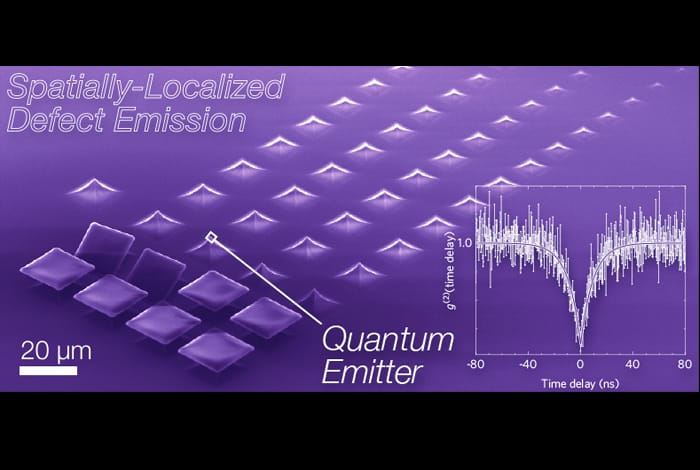Photon-controlling film delivers quantum technology boost
Scientists at Los Alamos National Laboratory in New Mexico have developed a thin film that can control the release of photons and could have applications in quantum computing.

Made from tungsten and selenium, the two-dimensional material was synthesised using chemical vapour deposition with a multi-step, diffusion-mediated gas source. It can facilitate the emission of single photons of light, a capability essential for all-optical quantum computing and key distribution. Key distribution is a fundamental component of the high-level cybersecurity that quantum technologies promise.
“Efficiently controlling certain thin-film materials so they emit single photons at precise locations—what’s known as deterministic quantum emission—paves the way for beyond-lab-scale quantum materials,” said Michael Pettes, a Los Alamos National Laboratory materials scientist and leader of the multi-institution research team.
Described in the journal Applied Physics Letters, the research exploits strain at highly spatially localised and well-separated emission sites, or tips, in the tungsten/selenium film. The material’s ultra-thin profile means it conforms to the radius of the tips and bends slightly towards the substrate by a few per cent, like draping a sheet across a bed of nails. The resulting strain is enough to change the electronic structure at the tips, with the affected area emitting light of a different colour and nature than light from the rest of the film.
Register now to continue reading
Thanks for visiting The Engineer. You’ve now reached your monthly limit of news stories. Register for free to unlock unlimited access to all of our news coverage, as well as premium content including opinion, in-depth features and special reports.
Benefits of registering
-
In-depth insights and coverage of key emerging trends
-
Unrestricted access to special reports throughout the year
-
Daily technology news delivered straight to your inbox










CCC Report Finds UK Climate Targets Still Within Reach
In 1990 67% of the UK´s electricity came from coal-fired power stations and even without renewables the transition to gas was a major contributor to...